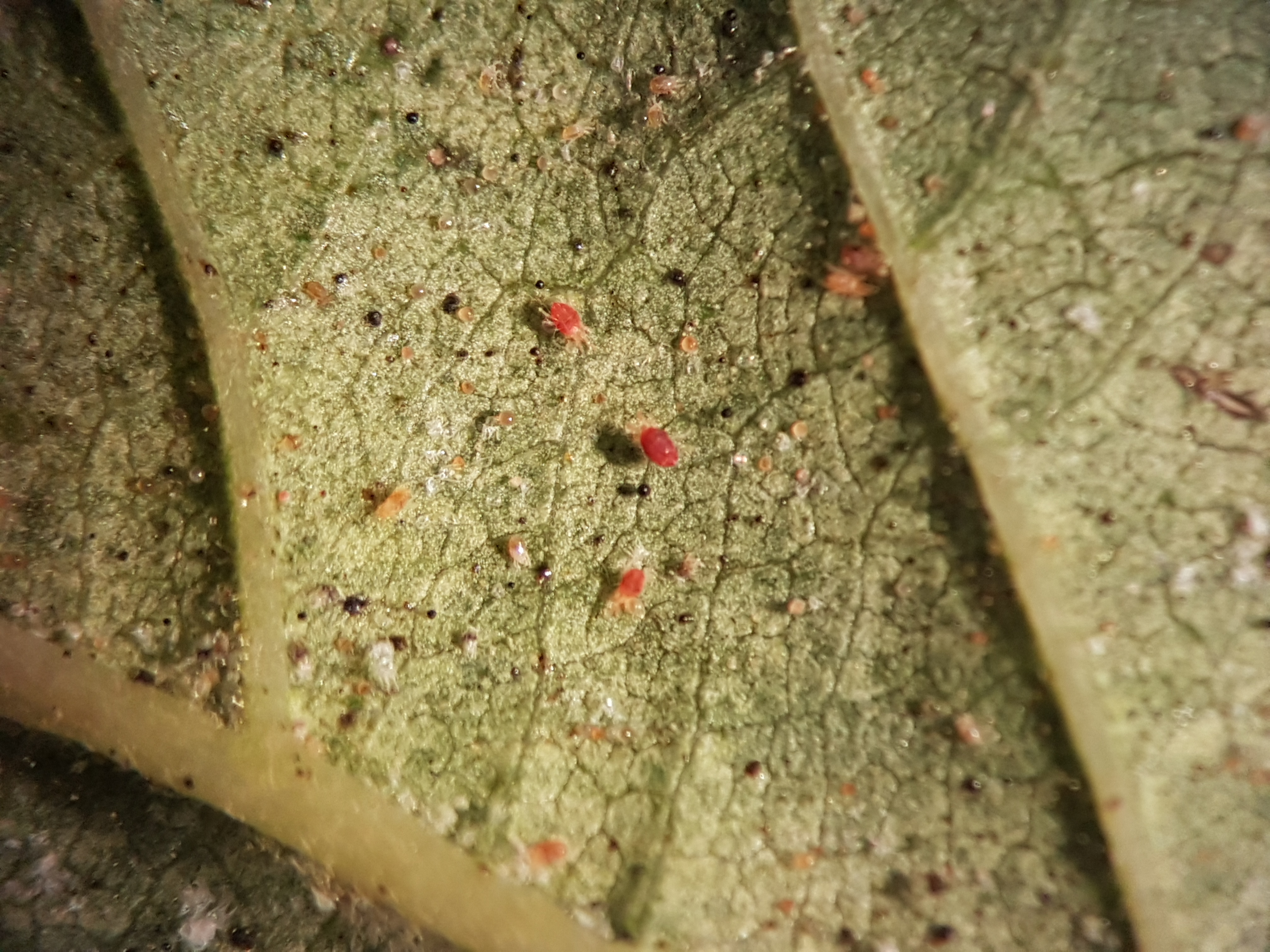Effective management of mites includes being able to identify and monitor mites, calculate Cumulative Leaf Infested Days (CLIDs) to determine thresholds for spraying, and knowing the beneficial insects that predate on mites – both naturally occurring and those that can be introduced.
Here are some further tips that are also crucial to adopt a fully integrated approach:
Limit Dust
Mite infestations are often worse near dust sources such as dirt tracks or roads. Consider using salamander or road base on high traffic tracks or investigate dust suppressants. Encourage staff, contractors, and visitors to drive slowly.
Ground cover and weeds
Maintaining healthy, green ground cover discourages mites in two ways. It reduces dust and provides an attractive alternative habitat for generalist biocontrol agents that feed on a range of pests. Two-spotted mite (TSM) is the only apple and pear orchard mite of concern with a wide range of hosts that includes broad-leaved weeds. As mites feed on grass pollen when no prey is available, maintaining a grass sward in the inter-row is important. Additionally, a balanced inter-row that provides nectar for parasitoids, shelter and food for generalist predators, and pollen sources is more beneficial.
Irrigation
Trees under water stress or suffering from waterlogging and salinity are more susceptible than optimally irrigated trees. Stressed trees often have leaf microclimates that are above ambient air temperature and create ideal conditions for mite development. A combination of mite feeding damage, and changes to leaf chemistry, can alter the plant response to mites and accelerate damage development.
Delaying the damage to ‘condition’ leaves
The theory that both apples and pears can withstand higher populations of mites if mite populations have built up slowly, allowing the leaves to become conditioned to their feeding, is based on assessments of the numbers of mites/leaf. There is a good relationship between numbers of mites/leaf and the percentage of leaves that are infested. As the number of mites/leaf increases so too does the percentage of leaves infested, but it is not a linear relationship with a constant rate of increase. Thresholds based on the Cumulative Leaf Infested Days (CLIDs) concept utilise this relationship, and the period of time that leaves have been infested, to measure the rate of increase in risk of damage. Plotting CLIDs over time produces a graph whose slope can be used to estimate when the threshold will be exceeded and gives growers guidance on when they should intervene to reduce the slope. The threshold is a seasonal threshold, not an instantaneous threshold, and the mite management strategies need to ensure that the threshold is not exceeded. This is critical in orchards where European red mite (ERM) and TSM are both present because ERM infests leaves earlier than TSM but the effects are additive. It is generally easier, and less disruptive to predators, to control ERM using green tip oil sprays than to require midseason use of miticides when predators of TSM are just getting started.
For further information see:
IPDM manual pages 238 – 246 Apple and Pear IPDM Manual.pdf
Our three videos with David Williams on Mite monitoring and control: https://extensionaus.com.au/ozapplepearipdm/mite-management-in-orchards/
Article on Calculating CLID’s https://extensionaus.com.au/ozapplepearipdm/cumulative-leaf-infested-days-clids/

